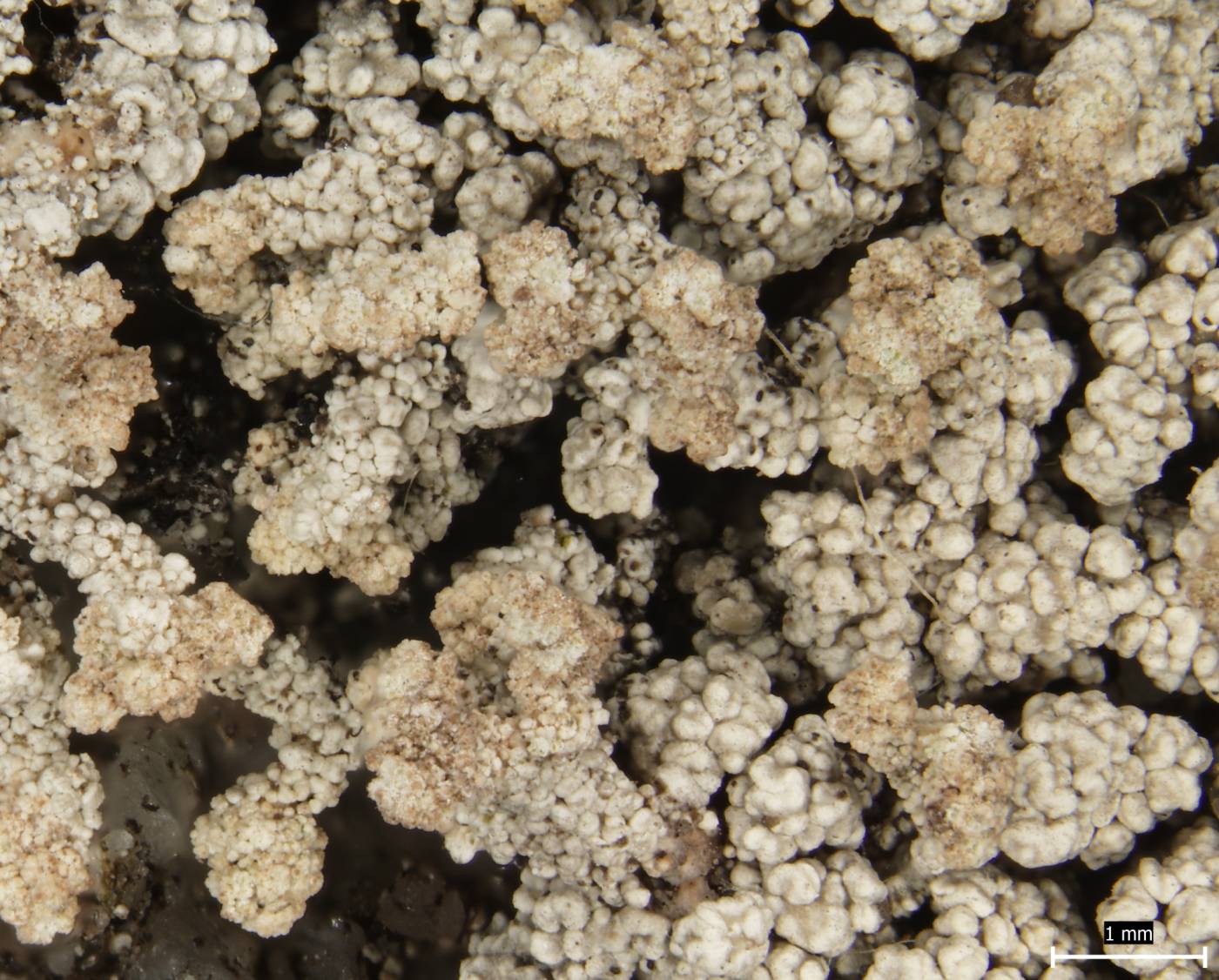Stereocaulon symphycheilum is a rare species with terminal globose soralia and phyllocladia with a dark central part and paler margins. From similar S. vesuvianum it is distinguished by the absence of stictic acid and presence of lobaric acid (UV+). The species grows on siliceous rocks and stones, often on substrates rich in iron and copper, including anthropogenic stands, such as spoil piles. It is an arctic-alpine species, mainly known from the Alps and Scandinavia. In the Czech Republic, it is only known in České Švýcarsko (Bohemian Switzerland National Park), where it is locally abundant. It grows on exposed tops of sandstone rocks, often enriched with iron oxides.
Literature: Palice Z., Malíček J., Peksa O. & Vondrák J. (2018): New remarkable records and range extensions in the central European lichen biota. – Herzogia 31: 518–534.
taxonomic classification:Ascomycota → Lecanoromycetes → Lecanorales → Stereocaulaceae → Stereocaulon
Red List (Malíček 2023):C1 – critically endangered
Occurrence in the Czech Republic
All records: 14, confirmed 14. One click on a selected square displays particular record(s), including their source(s).

